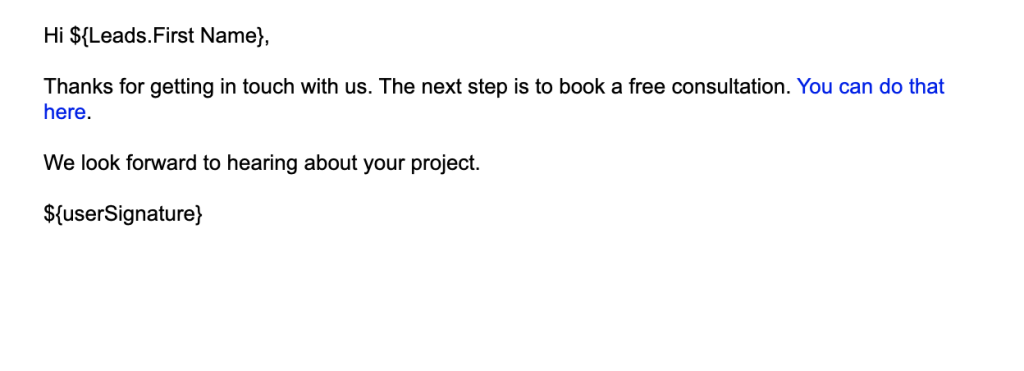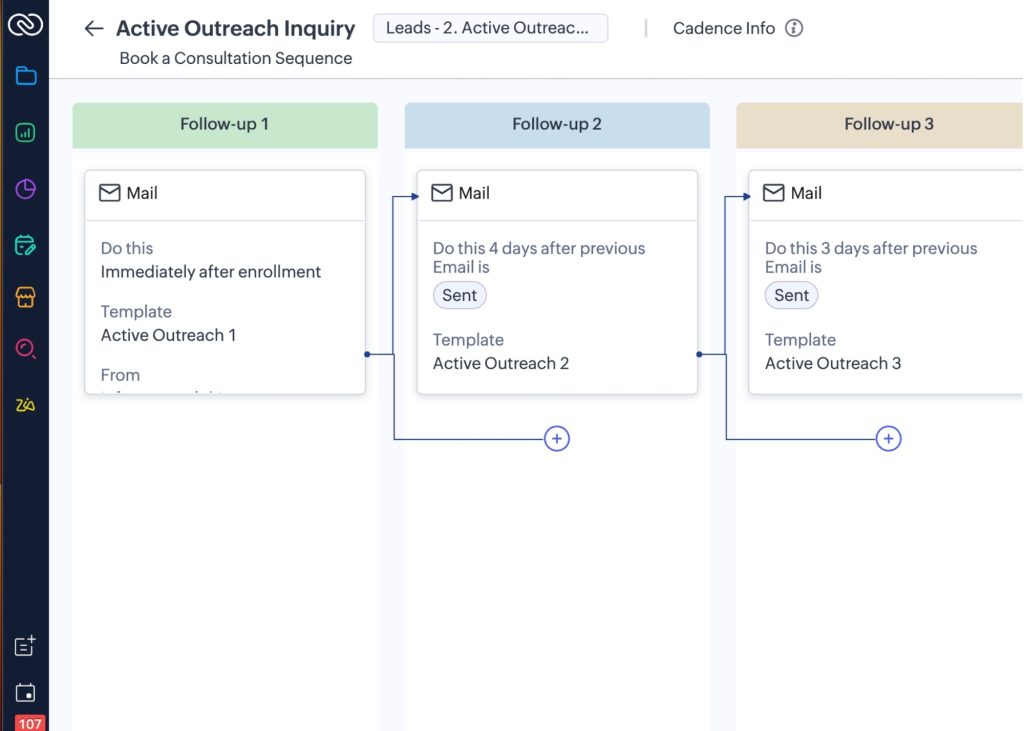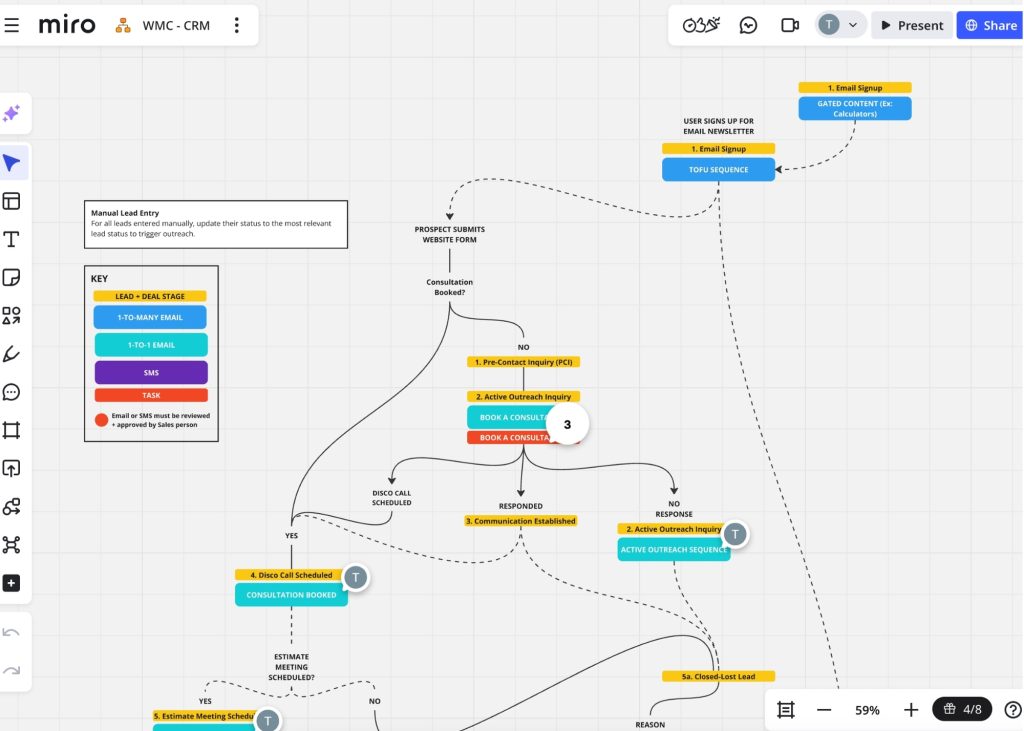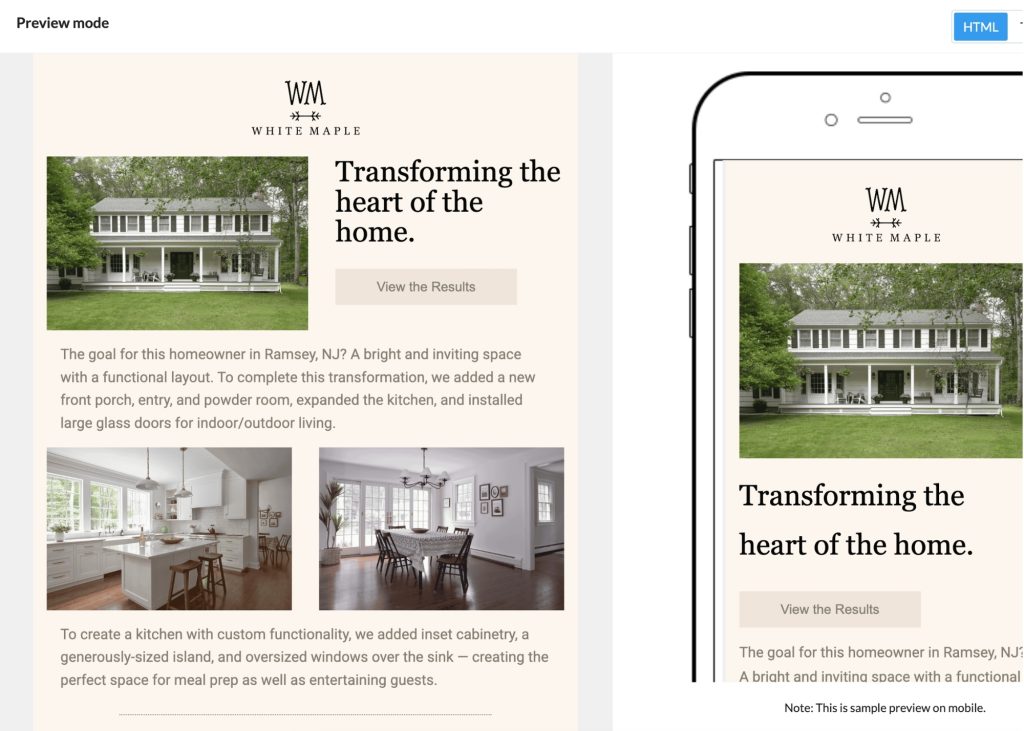Speed is everything in construction sales. In fact, one of our California design-build clients lost out on a multi-million-dollar project simply because another contractor responded faster.
The lesson is clear: if you are not the first to respond, you may not get a second chance. That is where contractor CRM and automation systems can make the difference between a missed opportunity and a signed deal.
Why Speed to First Response Wins in Construction
When a lead comes in, every minute matters. Prospects often contact multiple contractors at once, and whoever replies first has the advantage of setting the tone. A construction CRM strategy ensures every inquiry gets acknowledged immediately, even if you or your team are on the job site. A simple automated email or SMS confirming you received the inquiry signals professionalism and keeps prospects engaged while you prepare a full response.
My go-to fast follow-up email looks like this:
“Hi [First Name], thanks for reaching out about your project. I’d love to learn more and see how we can help. Do you have time for a quick call this week? You can also grab a spot on my calendar here: [link].”

This quick touch is often enough to keep leads warm while you sort out next steps.
CRM vs. Build Management Tools
One of the first things we clarify with contractors is the difference between a project management platform and a true CRM system. Many of our clients start out on tools like JobTread or BuilderTrend. These are excellent for managing jobs once a project is underway, but they fall short on the marketing side of the funnel — particularly for lead nurturing, automated emails, and top-of-funnel communication.

That is where a dedicated CRM shines. Tools like Zoho, HubSpot, or HighLevel are designed for automated lead nurturing and pipeline management. Our preferred recommendation is Zoho CRM because of its scalability, customization, and ability to grow with your business. It allows for complex automation sequences, email workflows, and SMS touchpoints that support not just sales, but brand trust and lead conversion.
Map the Journey, Then Automate the Gaps
Before you start loading emails into a CRM, you need to map the customer journey. Where are you losing leads? Is it at the inquiry stage, after the first call, or once a proposal has been sent? Once you know where the drop-offs happen, you can use automation to fill those gaps.
One client’s CRM map included automated follow-ups for three key stages:
- Immediate response: Email or SMS confirming receipt of inquiry.
- Re-engagement: If no response after the first proposal, a timed follow-up reminding them of next steps.
- Nurture: Long-term emails to keep them engaged if their project is delayed.

We also help contractors maintain CRM maps long term. A common issue we see is that as new people join a company, they add automations on top of automations, until no one knows what’s going out or whether it’s working. We build and maintain clean CRM maps that give transparency into client communications, update them as strategies evolve, and ensure every automated sequence is serving a purpose. (We’ll show an example of one of these maps in this post.)
Core Sequences for Contractor CRM and Automation
There are three must-have contractor email sequences that drive results:
Fast Follow-Up
The first email or SMS goes out within minutes of the inquiry. The goal is to acknowledge the request and give a clear next step.
Re-Engagement
When a proposal is sitting in someone’s inbox, automation ensures it does not die there. A polite reminder or FAQ email about the process can reignite interest.
Top-of-Funnel Nurture
Not every lead is ready to buy now. An educational sequence that shares blog posts, project case studies, or design tips builds trust until they are ready to move forward. For example, this top-of-funnel send from one of our design build remodeling companies had a 63% open rate and a 20.8% click-to-open-rate (CTOR) – which are both phenomenal engagement signals.

Choosing a CRM and Keeping It Human
Not every CRM fits contractors, so pick one that balances automation with personalization. We often recommend Zoho for its scalability, but HubSpot and HighLevel are also viable depending on your company’s setup. The real key is ensuring your CRM keeps the human element intact. A well-written automated message should feel like a natural extension of your brand, not a robotic script.
We also make thoughtful decisions about SMS. It is great for immediate updates (like confirming an appointment or reminding someone of a call) but it should never feel intrusive. In our view, SMS works best for time-sensitive information, not for long sales pitches.
Fixing Common Calendar and Speed Issues
After someone submits an inquiry on your website, its ideal to redirect them to a booking page to get them to schedule a consultation. This improves conversion rate drastically since interest decreases significantly if action / connection isn’t made within an hour.

One technical barrier we see often is clunky calendar embeds that slow down booking. For one client, they switched booking tools and the new calendar took significantly longer to load, which killed conversions. We switched it back for a lighter-weight calendar link and cut load times dramatically. The result? Leads actually booked appointments again instead of abandoning the page.
Faster Follow-Ups, More Closed Deals
The bottom line: contractors who embrace CRM and automation are the ones consistently closing more jobs. By mapping the customer journey, automating smart touchpoints, and ensuring the human touch remains, you can turn more inquiries into signed contracts without adding hours of admin work to your week.
Ready to Automate Your Contractor Marketing?
If you want a construction CRM strategy that saves time and helps you close faster, Nover Marketing can help. Book a free consultation today and see how our team builds CRM maps, automates lead nurturing, and drives real results for contractors like you.